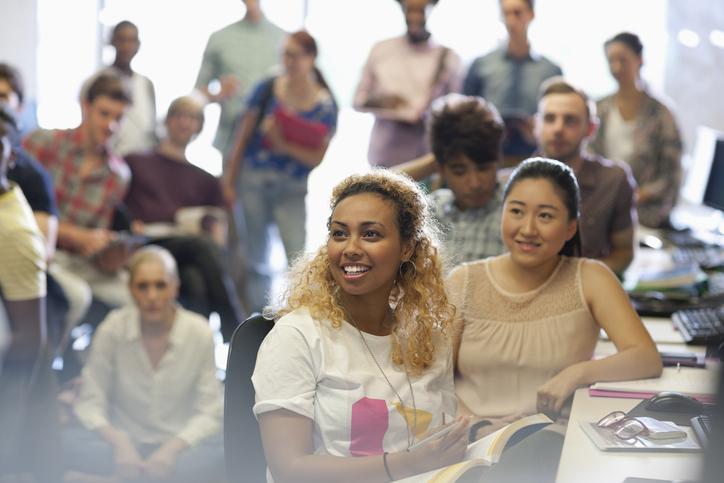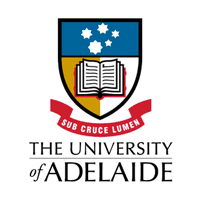
We must help HDR students experience a sense of community and belonging
A University of Adelaide team on what can be done to enhance community for higher degree by research students and how to ensure they see this culture from the outside
You may also like
Popular resources
The nature of the higher degree by research (HDR) student experience is complex, as students are completing a university programme while becoming part of the academic community both within their university and outside it. A sense of community and belonging have been associated with increased mental well-being, improved student integration into the university and better academic achievement. Conversely, attrition and dissatisfaction among HDR students is highly influenced by social experiences (among other factors). When asked, HDR students identify culture, community, peer engagement and networking as key to improved well-being.
This is particularly relevant given the move to online events and external research. HDR students who are located off campus or not close to a cohort of fellow HDRs can feel isolated and unsupported by their university. These students have limited access to networks, support and even opportunities to attend or present at seminars. Being off-site compounded by a decline in face-to-face events leads to fewer opportunities to actively engage across disciplines and create peer networks. Involving these students in inductions and cross-campus activities is critical to providing the community experience that matters to HDR students.
- Five tips for helping international students settle in their new surroundings
- Amplify the authentic student voice in university marketing
- Welcome events make the transition to hybrid
Given the importance of the early stages of HDR candidature in student retention and completions, building culture and community early is important. Universities can do several things to make such opportunities visible to potential and commencing HDR candidates. Inclusive offerings of clubs, societies and events build culture and community in a university, while the presence and clear communication of training programmes and placement opportunities can provide opportunities for cross-disciplinary interaction and make a considerable difference to a HDR student’s experience.
Offering in-person inductions across precincts also helps remove barriers to inclusion and facilitates a sense of community early on. When carried out effectively, these events can encourage early engagement in clubs and societies. These sessions could also be used to highlight and promote existing supports.
Such offerings make a university more attractive to domestic and international potential candidates considering their future. But the question is, can potential applicants see these offerings when they are considering applying to a university? We surveyed Australian university websites to see whether such opportunities were visible and valued in the external-facing culture of the university. We found significant variation in the extent to which different universities highlighted and celebrated community.
Most successful, in our opinion, were websites that made student-led groups and events visible on official graduate school, faculty and affiliated institute webpages. This made explicit the existence of an integrated, inclusive, whole-of-community approach in which students were treated as valuable participants in the HDR culture and experience. Such websites provided prospective students a sense of a thriving and lively HDR research community and gave commencing students a useful method of finding it.
Hence, we recommend that official university websites advertise both:
Formal structures, in the form of
- Faculty inductions and events
- Technical and professional training
- Projects/fieldwork placements
- Staff/student/department seminars, writing groups, journal clubs
As well as informal structures, such as:
- Morning teas and similar occasions
- Student-driven social events and reading groups
- Opportunities to join professional societies and networks
- Opportunities to collaborate with other research groups/laboratories and interact with invited researchers
- Activities that connect off-site candidates to the energy of on-campus activities and inform those students of events on main campus
- Teaching and research roles to be promoted and fostered across all disciplines and potentially integrated into the HDR programme
- Provision of an office space and a desk for candidates in close proximity to their (departmental) peers and other members of the department/school
- Discipline or location-based formal and informal events
Experiencing community as an HDR student is an important aspect of graduate studies. The creation of ties between HDRs and their relevant groups and fields within and outside the university facilitate the building of ties and future networks. Research groups, faculties and institutions need to ensure this link to community is established, maintained and goes beyond the university, to ensure current HDR students and future researchers continue to be seen as contributors to society.
Tania Crotti is associate professor and postgraduate coordinator manager for the School of Biomedicine and co-facilitator of the HDR Supervision Community of Practice at the University of Adelaide, Australia.
Carina Kraft and Lily Atkinson are current HDR students in the School of Social Sciences at the University of Adelaide.
Anna Szorenyi is lecturer in the School of Social Sciences and co-facilitator of the HDR Supervision Community of Practice at the University of Adelaide.
If you found this interesting and want advice and insight from academics and university staff delivered direct to your inbox each week, sign up for the THE Campus newsletter.





Comments (0)
or in order to add a comment